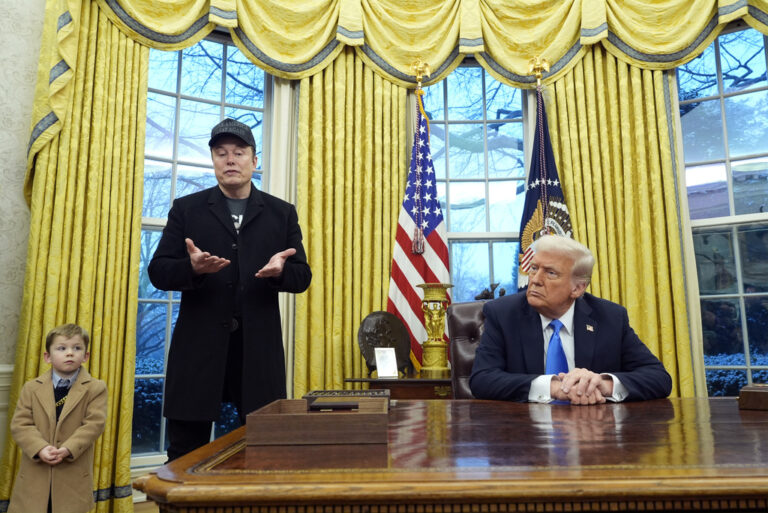 [By Rabbi Yair Hoffman]
[By Rabbi Yair Hoffman]
Winter vacation is fast approaching and a number of high school boys are contemplating a good game of paintball. What is the nature of this pastime? Paintball is an American sport that combines elements of tag, capture the flag, and war-making.
It is the third largest alternative sport in the United States, and shockingly enough, it is still growing. In this game, players on two or more opposing teams eliminate their opponents by shooting at them with paint-filled gelatin capsules called “paintballs.” The paintballs are shot from guns that contain compressed air or carbon dioxide cartridges.
The game is played in the United States by more than nine million people per year and, aside from eye injuries, is generally regarded as safer than other sports. Eye injuries can be averted by the proper use of goggles. Before goggle use was strictly enforced, however, an eye injury from paintball usually led to permanent blindness in that eye.
The game can be played indoors or outdoors, and there are many different types of guns and paintballs. Usually the indoor guns use a lower velocity, with the paintballs shot at a speed of 280 feet per second, which works out to some 190 miles per hour. This is what the industry considers to be safe, but many playing fields have guns that shoot upward of 200 miles per hour. Regardless, the paintballs sting and cause bruises that last for a number of days.
IS IT PERMITTED HALACHICALLY?
Our question deals with the halachic aspects of this game. Is it halachically permitted to play paintball?
Why might it be forbidden? When a paintball is fired upon another person, it usually causes a bruise or contusion. A typical injury may sport a bright red mark in the center, where the paintball actually hit, and surrounding green and purple circles of broken blood vessels.
May one cause a bruise to another person, even if that person has, so to speak, given permission?
THE TALMUDIC SOURCES
In Maseches Bava Kamma (92a), the Mishnah states as follows:
If one says to another, “Blind my eye,” “Cut off my hand,” or “Break my leg,” and the person did so, he is obligated in damages. Even if the first person added the words “and there will be no liability,” he is still obligated in damages. If one says to another, “Rip my clothes” or “Break my jug,” and the person does so, he is liable. But if the first person added the words “and there will be no liability,” he is exempt from damages.
The Mishnah clearly distinguishes between bodily damage and property damage in regard to restitution. Why is there such a distinction? And what exactly are the parameters of “bodily damage”? Does bodily damage include only damage to a limb, or does it include bruises—the type of injury that occurs while playing paintball—as well?
The Gemara (93a) deals with the first question. Rav Assi bar Chama asked Rabbah what the differences are between the two parts of the Mishnah. Rabbah answered that a person simply does not forgive another person for damage to his extremities (rashei eivarim, “tips of limbs”), no matter what he may have said.
Rav Assi bar Chama then quoted another source, a beraisa, which clearly states that if someone said to his friend, “Hit me [or “injure me”], on the condition that there will be no liability,” he is not liable. Rav Assi bar Chama argued that a person is no more likely to forgive someone for inflicting physical pain than to forgive someone for causing damage to his extremities! And yet we see that he may stipulate that there will be no liability!
Rabbah did not have an answer, and he asked Rav Assi bar Chama whether he had heard any insight on the issue. Rav Assi bar Chama then quoted Rav Sheishes in saying that an injury to the extremities involves a disgrace for the victim’s family, and the victim cannot waive that. The Gemara then proceeds to record three opinions on the matter:
1. Rabbi Oshayah is in agreement with Rav Sheishes that the issue involves family disgrace and that is why injury to the extremities cannot be forgiven, but liability for painful injuries can be forgiven.
2. Rava states that there is a difference between damage to a person’s extremities and the infliction of pain. A person might permit someone to cause him a painful injury, but no one would permit permanent damage to be inflicted without liability. Rava rejects Rav Assi bar Chama’s comparison of the two.
3. Rabbi Yochanan says, “There is a yes that is like a no, and there is a no that is like a yes.” He reads the original text of the Mishnah differently from the translation presented above: The assailant asks the victim, “And there will be no liability?” and the victim responds, “Yeah, sure.” The “Yeah, sure” is sarcastic, according to Rabbi Yochanan, and that is why in regard to damage to extremities, he is liable. (The issue of “hit me” or “injure me” in the beraisa quoted by Rav Assi bar Chama did not involve sarcasm at all.)
Thus, according to all three opinions in the Gemara, a person may waive liability to injury if it does not involve permanent damage such as cutting off a hand or blinding an eye.
THE GEMORAH JUST DEALS WITH PAYMENT
However, this entire discussion only deals with the issue of payment—whether the paintball shooter is exempt from paying the damages for the bruises he inflicted on the person, even though he did so with the tacit permission of the other player. But is there still a prohibition of injuring him in the first place?
The Rambam rules clearly (Hilchos Chovel Umazik, 5:1) that the prohibition of injuring a person applies both to injuring another person as well as to injuring oneself. Doesn’t a person who injures himself give himself tacit permission to do so? Yet we still see that there is a prohibition! It must be that the entire discussion in the Gemara dealt solely with the issue of monetary payment—but in terms of the prohibition of injuring, permission does not help!
THE SOURCE OF A POSSIBLE PROHIBITION
What is the source of the prohibition? According to Rambam and Rashi (Bava Kamma 87a), the source is the verse in Parashas Ki Seitzei (Devarim 25:3) that states, regarding a court-appointed lasher, “Forty lashes shall he strike him; he shall not add to it.” The words “he shall not add to it” applies to a person who legally administers the lashes to someone deserving of them. The lasher may not be excessive.
Certainly, the words would also apply to someone who is hitting someone who is not liable for lashes at all! This is also the opinion of the Rivash in his Response No. 484 as well as the Yam Shel Shlomo, No. 67.
So it would seem that paintball would be forbidden on account of the above verse in the Torah, according to the Rivash and Yam Shel Shlomo. According to them, playing paintball would be a violation of a Biblical prohibition.
But wait, paintball fans—all is not lost. According to Rabbi Levi ben Chaviv, who is the son of the author of the Ein Yaakov, there may be hope (see Responsa of the Maharalbach in the Kuntrus HaSmicha near the end, “Od Ani Omer”).
THE MAHARALBACH’S VIEW
The Maharalbach deals with a case of someone who wants a beis din to give him lashes even though he did not do any misdeed that warrants lashes. Rather, the person wants a kareis punishment negated by the lashes that beis din would give him.
The Maharalbach writes that if a person gives permission to be hit, he may do so in regard to pain that does not involve damage to the extremities. He writes that even though he did not see this clearly written anywhere, there is somewhat of a proof to it in the language of the Rambam.
The Rambam writes (Laws of Chovel Umazik, 5:1): “If someone strikes a kosher person in Israel, whether it is a child or adult, a man or a woman, in a manner of nitzayon, he has violated a negative prohibition.” (Nitzayon means in violence and in dispute.) The Maharalbach concludes that if it is not done in a dispute or in actual violence, permission would also diffuse the prohibition.
How might the Maharalbach deal with the fact that it is forbidden to do damage to oneself? Perhaps the issue is one of “striking” versus “injuring.” Asking someone to strike you or striking yourself might be permitted, but injuring oneself would still be prohibited. (This distinction is actually made in Sefer Chemdas Yisroel, Ner Mitzvah No. 79 as cited in Responsa Ateres Paz 1:3 C.M. No. 7]. Thus, according to the Maharalbach, paintball would be permitted. Most authorities, however, reject the position of the Maharalbach.
When the issue of paintball came up once at my Shabbos table, one of my sons informed me that his Rosh Yeshiva forbade it, while his camp Rav (who also happens to be a mara d’asra of a shul here in the Five Towns) permitted it.
CONCLUSIONS
Since the issue revolves around a Torah prohibition, one should, of course, be stringent. However, it would seem that if one has a child or student who is in need of such an activity in order to maintain his religio-psychological well-being, and there is no suitable substitute, one may rely on the Maharalbach to go paintballing.
The author can be reached at [email protected]











11 Responses
Painball is a dying sport in the US. Painball places have been closing right and left over the past few years.
However, it would seem that if one has a child or student who is in need of such an activity in order to maintain his religio-psychological well-being, and there is no suitable substitute
This is a load of crock and 21st century-style psychobabble. No one’s “religio-psychological well-being” needs painballing. There are many alternatives.
Neurotic litvish pilpul judaism. G-d help us all.
Paintball is such a goyish concept. When it first became popular I couldn’t believe that frum people would even do such a sport,
YWN ! Please stop this pseudo-halachic gibberish! either post a clear full authoritative halachic discussion-or none at all. The term “religio-physocological well being” connotes that “if don’t feel good – then it aint reliously advised”. This is physclolgical equivalent of the (intellectual) haskalah! In 1800 they said it has to MAKE SENSE to be valid, nowadays it has to FEEL GOOD to be valid….Chas Vshalom! Remove these4 ever-so-subtle but dangerous infiltrations of akiras hatorah from you otherwise wonderful site !!!
BS”D
#3: Let me guess, you like to go paintballing. Or, if not, you might like other things that a good Litvisheh pilpul might come to prohibit. Of course, it might not be the pilpul that makes something assur, if you understand my meaning. By the way, I don’t pretend to be enough of a lamdan to say that whether the article is right on or missing something. But if you want to dismiss the author’s conclusion, I think you might have to do so with a source or two, or a logic or two. I think that’s a fairly reasonable expectation, no?
#2 and 5: I agree with your sentiments (of course, who cares that I agree), but if we were to take out the objectionable sentence from the article, I assume that you would have no problem with the halachic analysis. Perhaps in that last sentence the author was trying to find a liumd z’chus for any frum people who do go paintballing. We can all debate the validity of the limud (and perhaps the author himself doesn’t hold of it too much either), but at the same time, the flow of his article certainly seemed to leave little room to be matir the practice of paintballing. He had to come up with something to justify relying on the Maharalbach, which in turn provides the limud z’chus for what some frum people do.
Having communicated with Rav Hoffman regarding the criticism towards his last paragraph, I would like to state that this was intended to permit it in limited fashion within the context of kiruv, rehab etc.
From past experience I have found the Rav very accessible and readily available to clarify any questions regarding his articles which beautifully depict how our Torah is relevant in every part of our life. Kol HaKavod Rav Hoffman.
#3 You can always ask your reform clergy…they have no problem with these sheilos after all its not mentioned in the bible
#3….by the way, which g-d you talking about. The G-D we believe in, on this site, gave 613 mitzvous with oral explanations for each mitzvah as as seen in lenth in Talmud and codified in Shulchen Urech and that is Judaism. If you don’t believe this then your not practicing Judaism…remember if your Jewish (thru mother)somewhere down the line , your father, grandfather etc practiced what we practice, so who changed it? Did anyone have a new relevation to discard all this ? No, the sages of the Talmud did not interpet anything they just explained, see hakdomes of Rambm ,Zeruim. EG: He explains.. the torah says ‘eye for an eye’. Nowhere in recorded history medresh etc etc there any rames that this was ever practiced …why because when G-D taught Moshe misinei this law he right away told him… ibid…and all this pilpul in oral torah in bava kama is ….see Rambam therewhy . And so is with all mitzvos. Why did G-D put it in such wording ‘eye for an eye’? Saw a lot of beautiful explanation… too long too elaborate.
Was the first comment meant to be a pun? In #1, UJM says:
“Painball is a dying sport”.
Indeed it is – though the dye is not permanent. But Tzoveiya is not assur on a weekday, so the article only discusses injury.
Is there an additional issue if a shot from a child bruises their parent?